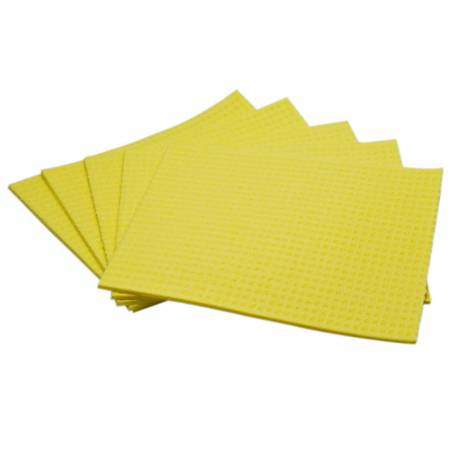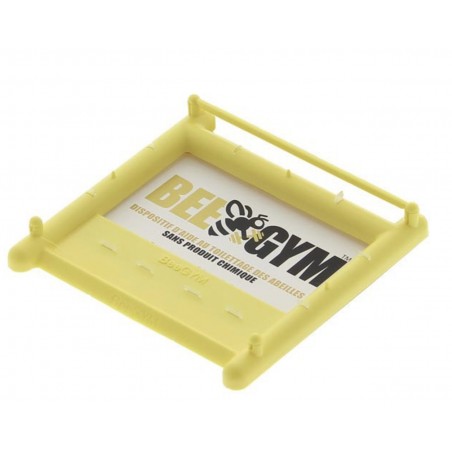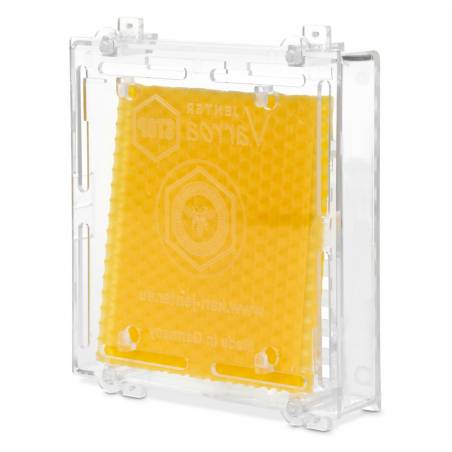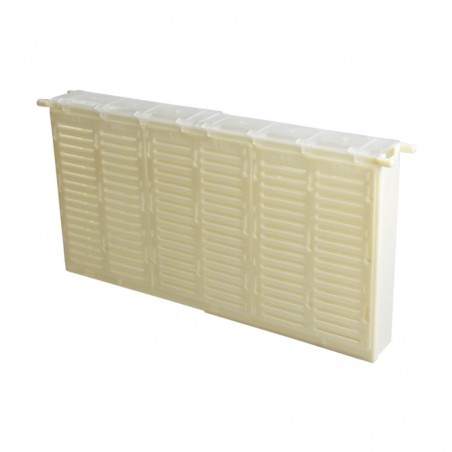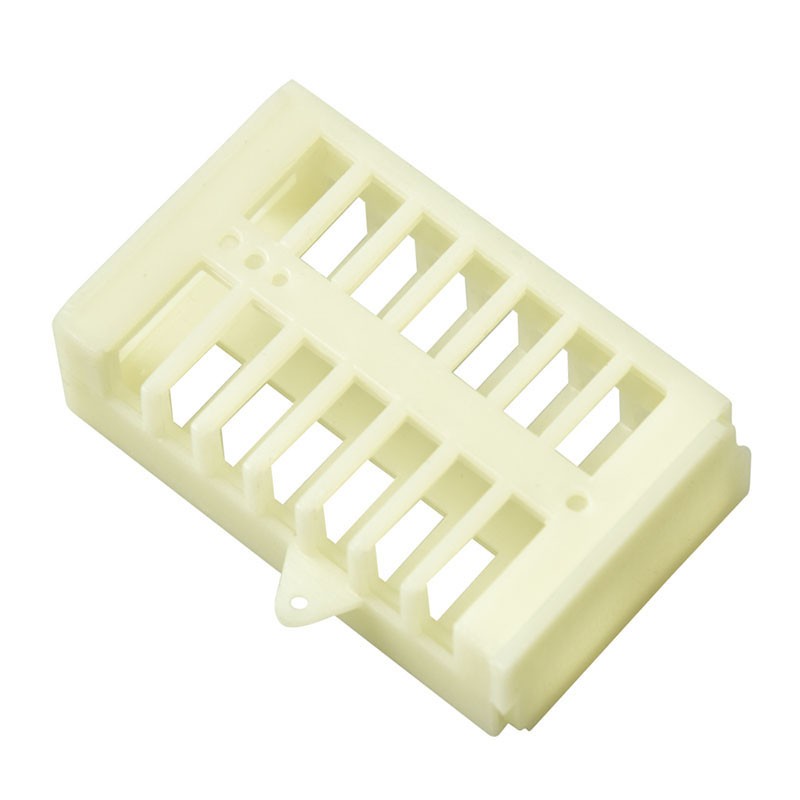






This sliding plastic queen cage is specifically designed to cage the queen, blocking her laying activity and allowing Varroa treatments to be applied without brood. Its use is essential in integrated pest management to reduce the Varroa population in your hives, ensuring a complete brood interruption during treatment.
Technical Features:
• Dimensions: 55 x 30 mm, width 17 mm.
• Material: Durable and resistant plastic.
• Optimized bee passage: The design of this cage allows worker bees to pass through and continue tending to the queen, but prevents the queen from escaping, ensuring her laying is interrupted during the caging period.
Why is it ideal for Varroa management?
One of the most effective strategies for controlling Varroa is to treat when there is no sealed brood, as the majority of Varroa mites hide and reproduce in the brood. This cage allows you to easily and safely cage the queen, interrupting her laying without compromising her health. Unlike conventional queen transport cages, this cage is specifically designed to prevent propolization of the grids, which can suffocate the queen. Thanks to its optimized design, worker bees can move freely around the queen, keeping her healthy and well-cared for throughout the caging period.
Key Advantages:
• Compact size without compromising effectiveness: While this is a small cage, its size does not impact functionality. What truly matters is that the worker bees can pass through while keeping the queen securely inside.
• Prevents grid propolization: One common issue with transport cages is that bees tend to propolize the small openings, leading to the queen’s death. This product is designed to avoid that problem, ensuring a constant flow of worker bees.
• Ideal for treatment without brood: The absence of brood is crucial for treatments with oxalic or formic acid to be highly effective, as they eliminate Varroa in the adult stage without hiding in the brood. This cage is the perfect tool to carry out this type of management without manually removing brood frames.
How to use it:
1. Queen Caging: Place the cage over the frame where the queen is located and slide the lid to enclose her. No need to handle the queen directly.
2. Caging Period: Leave the queen caged for 21 to 30 days, until the entire brood cycle has been completed.
3. Varroa Treatment: Once there is no sealed brood left in the hive, apply your preferred Varroa treatment, such as oxalic acid, for maximum effectiveness.
4. Release: After the caging period, simply open the cage and release the queen to resume her normal laying activity.
Who is this cage for?
This is an indispensable tool for both professional and hobbyist beekeepers looking to manage Varroa more effectively without relying solely on chemical products. Additionally, it facilitates a more sustainable and environmentally-friendly beekeeping approach by reducing the use of synthetic acaricides.
With this queen cage, you will not only improve hive management, but also contribute to keeping your bees healthier and more productive, ensuring a fruitful season ahead.


This sliding plastic queen cage is specifically designed to cage the queen, blocking her laying activity and allowing Varroa treatments to be applied without brood. Its use is essential in integrated pest management to reduce the Varroa population in your hives, ensuring a complete brood interruption during treatment.
check_circle
check_circle

